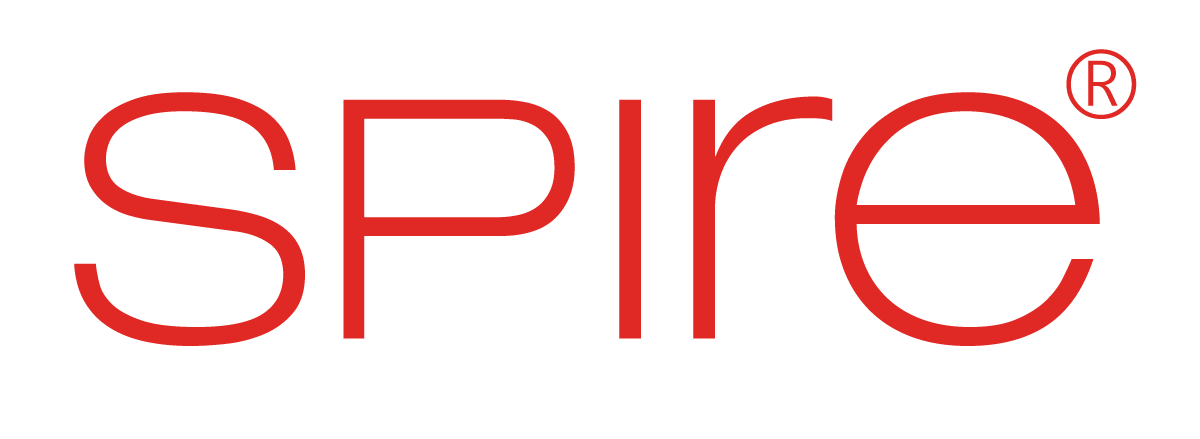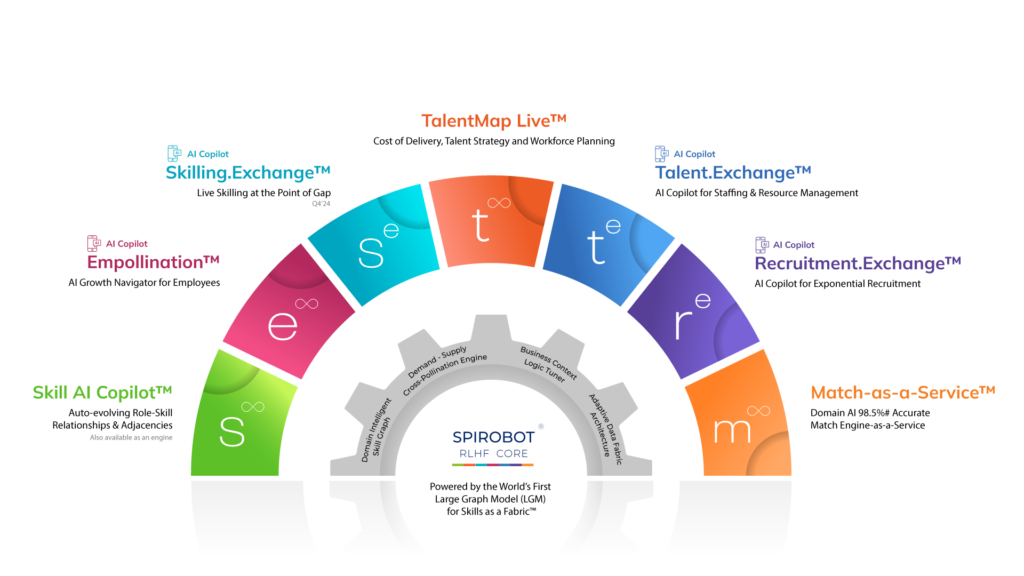The modern workforce is undergoing a quiet but profound shift. As digital acceleration reshapes every function, organizations are waking up to an uncomfortable truth: their talent strategies are built on outdated assumptions. Chief among them? That a static inventory of skill sets is enough to drive agility and performance.
In reality, the velocity of change demands a new approach, one built not on fixed roles or historic qualifications, but on real-time skill visibility. It’s the difference between looking at a résumé and understanding what someone can do right now. Welcome to the era of skill signals.
The Problem with Static Skill Sets
For decades, organizations have relied on static skill sets, predefined checklists tied to roles or job titles as the basis for hiring, workforce planning, and development. But in today’s fast-moving economy, this approach has become a liability.
Static skill sets are inherently backward-looking. They reflect what a role used to require, not what it needs today or will need tomorrow. As a result, they fail to keep pace with:
- Rapid technology evolution (e.g., emergence of GenAI, data fabric, low-code platforms)
- Changing business models (e.g., shift from service-based to product-led strategies)
- Cross-functional role blending (e.g., marketing-ops hybrids, technical customer success roles)
Moreover, these skill sets are typically:
- Self-declared (via outdated surveys or onboarding forms)
- Sporadically updated, if at all
- Disconnected from actual performance, learning behavior, or context
This creates a fundamental gap: organizations don’t know what their people are actually capable of in real time.
A recent Deloitte report (2023) found that only 18% of organizations have visibility into the skills of their workforce in real time, and most update skill profiles annually or less rendering the data obsolete before it can drive decisions.
The impact of relying on outdated skill inventories shows up in critical business areas:
- Misaligned hiring: Roles are filled based on job descriptions written years ago, not current project needs
- Wasted reskilling: Training budgets are spent on programs that don’t match true skill gaps
- Underutilized talent: Employees are overlooked for new opportunities because their evolving capabilities aren’t captured or visible
In short, static skill sets trap organizations in reactive mode constantly hiring to catch up instead of proactively shaping the workforce around emerging needs.
The Static Skill Set Trap
|
Static Skill Sets |
Skill Signals |
|
One-time entry |
Continuously inferred |
|
Self-declared or HR-defined |
Based on actual work |
|
Not updated with performance |
Proficiency tracked over time |
|
Lacks contextual depth |
Context-aware application |
To compete in a skills-first economy, enterprises must evolve from snapshot-based models to dynamic, real-time skill visibility, and this starts by shifting from static records to continuously updating skill signals.
What Are Skill Signals and Why Do They Matter?
Skill signals are dynamic, real-time indicators of a person’s actual capabilities, proficiency, and applied skills in context. Unlike traditional skill inventories, which are often manually maintained and outdated, skill signals are continuously updated based on what employees are doing, learning, and achieving in their day-to-day work.
They answer three fundamental questions that static skill sets cannot:
- Can this person perform a specific skill now?
- How proficient are they in it, and is that changing over time?
- Is the skill being applied in a context that aligns with business needs?
What constitutes a skill signal?
Skill signals are generated from a variety of observable, behavioral, and contextual data sources across the enterprise, including:
- Work output (e.g., contributions to projects, code repositories, reports, campaigns)
- Collaboration patterns (e.g., peer reviews, team feedback, cross-functional work)
- Learning engagement (e.g., course completion velocity, certifications, learning reinforcement)
- Business outcomes (e.g., KPI achievement, product launches, client success)
These signals are interpreted not in isolation, but within context: a software engineer using Python to ship a scalable backend system in fintech has a different proficiency profile than one doing basic scripting in marketing automation.
That context is crucial, and it’s where most skill tracking systems fall short.
Why do skill signals matter now more than ever?
Because the half-life of skills is shrinking rapidly. According to the World Economic Forum’s 2023 Future of Jobs Report, 44% of workers’ skills will be disrupted in the next five years, and the most in-demand skills are shifting toward analytical thinking, creative problem-solving, and tech literacy.
In this scenario:
- Having outdated skill sets is as risky as using outdated financial forecasts
- Failing to detect diminishing or emerging proficiencies can lead to project failures, mis-hires, or bench stagnation
- Relying on tenure or title as a proxy for readiness is no longer defensible
Skill signals provide a real-time view of your organization’s capability landscape showing not just who knows what, but how well they know it, how recently they’ve applied it, and in what context.
What do skill signals unlock?
When integrated into workforce systems, skill signals become the foundation for:
- Precision workforce planning: Understand capability readiness for future roles or transformations
- Smart redeployment: Move people based on live, validated capability not assumptions or paperwork
- Efficient upskilling: Target interventions where proficiency is slipping or where business-critical skills are underdeveloped
- True internal mobility: Match people to opportunities based on their actual skills trajectory, not outdated titles
In short, skill signals convert potential into visibility, and visibility into action, a crucial capability in a business environment where speed, adaptability, and precision are now table stakes.
Why Skill Proficiency Must Be Continuously Tracked
Many organizations assume that once a skill is acquired, it remains constant. This is flawed.
Proficiency – how well someone can perform a skill is variable. It depends on practice, exposure, and relevance. For example:
- A software engineer who hasn’t worked with a certain framework in two years may retain the knowledge but not the proficiency
- A product manager who’s led multiple cross-functional initiatives recently is likely gaining new strengths not yet captured in their skill profile
Tracking proficiency evolution is central to workforce resilience. It ensures that:
- The right people are matched to the right projects
- Reskilling investments are targeted to capability gaps, not assumptions
- Internal mobility is guided by proven performance, not job titles
In fact, a BCG report (2023) found that organizations using dynamic skill visibility saw 29% faster time-to-productivity in reskilled roles compared to those relying on static models.
From Visibility to Action: What Real-Time Skill Intelligence Enables
Having visibility into skill signals is only the first step. The real value emerges when those signals are embedded into decision-making across the talent lifecycle transforming how organizations plan, deploy, and develop their workforce.
Here’s how real-time skill intelligence converts insight into competitive advantage:
Smarter Workforce Planning
Traditional workforce planning relies on assumptions: headcount projections, role templates, and outdated job architecture. But in today’s dynamic environment, roles are changing faster than HR can codify them, and demand is increasingly fluid.
With live skill visibility, organizations can:
- Accurately assess supply-demand mismatches at the skill level not just by department or role
- Run “what-if” planning models to simulate future capability needs under different business scenarios
- Proactively invest in building or acquiring skills that align with long-term transformation goals
This means workforce planning becomes strategic and skill-centric, not reactive and role-bound.
Accurate Role-Skill Matching
Misalignment between talent and roles is a silent drain on productivity. A candidate may have the right title but lack core proficiencies. Conversely, internal employees with latent capabilities are often overlooked due to poor visibility.
Real-time skill signals enable:
- Matching people to roles based on verified proficiency, not keyword-stuffed resumes or tenure
- Recognizing adjacent skill clusters and surfacing non-obvious internal matches for open roles
- Reducing mishires and time-to-fill by aligning talent with live requirements
For instance, an internal analyst with growing Python proficiency and cross-functional project exposure may be better suited for a data product role than an external hire with theoretical credentials.
High-Impact L&D
Most L&D programs today are disconnected from real business needs. They rely on static competency maps and generalized training paths that fail to target actual gaps.
Skill signals transform L&D by:
- Identifying where proficiency is declining or plateauing in critical roles
- Personalizing learning journeys based on live capability profiles
- Prioritizing programs that address emerging business-relevant skills, rather than generic upskilling
This ensures that learning investments are data-driven, measurable, and outcome-linked, driving tangible ROI.
Agile Redeployment
When business conditions shift due to market turbulence, project delays, or customer realignments, speed matters. Yet most organizations struggle to reassign people quickly because they don’t know who’s capable of what right now.
Skill intelligence makes redeployment frictionless:
- Identify bench-ready talent with transferable skills and redeploy them before attrition risk sets in
- React to shifts in demand by realigning internal talent instead of rushing into external hiring
- Reduce idle time by matching capability to opportunity even across business units or geographies
This is especially valuable in global delivery models or enterprise transformations where agility is paramount.
Strategic Talent Mobility
Talent mobility isn’t just about promotions or role swaps; it’s about aligning evolving employee aspirations with verified business-relevant skills.
With real-time skill signals, organizations can:
- Surface growth opportunities that align with employees’ hidden or emerging capabilities
- Encourage self-directed mobility by making skill progression visible to both talent and managers
- Retain high performers by matching them to challenges they’re growing into, not just the ones they’ve already done
This approach turns internal mobility into a strategic advantage, not a reactive fix. It builds engagement, reduces attrition, and strengthens leadership pipelines from within.
Spire.AI: Turning Skill Signals into Strategic Advantage
At the core of Spire.AI’s platform is a fundamental belief: organizations can no longer afford to make talent decisions based on outdated, static information. To stay competitive, they need to understand their workforce the same way they understand their customers in real time, with contextual intelligence, and predictive precision.
Spire.AI’s Copilot for Talent operationalizes this belief through a robust Large Graph Model (LGM) for Skills, purpose-built for workforce intelligence. It doesn’t just track skills; it continuously infers, validates, and enriches skill data across the enterprise, turning it into high-fidelity skill signals that power workforce decisions.
Here’s how it works:
Domain-Intelligent Skill Inference
Spire.AI captures signals from across the enterprise projects, learning systems, performance data, and collaboration tools and uses Domain-intelligent AI to infer which skills are being applied, in what context, and with what outcome. This ensures that inferred skills are not only technically accurate, but business-relevant.
For example, the system understands the difference between “data visualization” in a marketing analytics context vs. the same term in a manufacturing quality control context resulting in contextual skill tagging, not generic classification.
Live Proficiency Tracking
Skills aren’t binary. Spire.AI tracks how proficiency evolves, whether an employee is advancing in a skill, maintaining it, or falling behind by analyzing patterns in work outputs, learning velocity, and collaboration feedback.
This proficiency model is continuously updated, giving organizations a real-time snapshot of individual and team-level capability readiness.
Contextual Role Matching
Spire.AI uses its Large Graph Model to map skills not just to job titles, but to the actual work being done inside the organization. It links skill signals with live business context such as project success metrics, transformation goals, and demand forecasts to recommend talent-role matches with high predictive accuracy.
This isn’t automation for automation’s sake. It’s intelligence that aligns people to business impact, faster.
Executive Dashboards with Actionable Insights
Spire.AI translates skill signal data into executive-level dashboards that provide visibility into:
- Skill distribution and concentration by geography, unit, or role cluster
- At-risk capabilities that may need reinforcement
- Readiness for new product launches, initiatives, or market expansions
- Internal redeployment potential vs. external hiring need
This moves skill visibility out of HR silos and into core business planning workflows where it belongs.
By embedding live skill signals into day-to-day decisions, Spire.AI transforms workforce strategy from static planning into dynamic orchestration, a competitive edge that grows stronger over time.
Case in Point: Scaling Talent Without Hiring Blind Spots
A Fortune 500 services enterprise recently used Spire.AI to assess over 40,000 employees across delivery hubs. By replacing static skill inventories with real-time skill signals, they achieved:
- 92% accurate role-skill alignment across global teams
- 30% reduction in hiring cycles by filling roles internally with proven capability
- 2.5X increase in internal mobility without broad-scale reskilling investments
The organization moved from reactive workforce planning to predictive skill orchestration routing the right talent to the right place before gaps emerged.
Building a Skill-Based Strategy: Where to Start
Organizations looking to modernize their talent strategy around skill signals can follow this phased approach:
1. Audit Your Current Skill Data
- What systems are collecting skill information?
- How frequently is it updated?
- Is proficiency being measured or assumed?
2. Shift from Roles to Capabilities
- Redefine jobs in terms of the skills they require today not what they required last year
- Link project success metrics to the skills that drove them
3. Invest in Skill Signal Infrastructure
- Move beyond surveys and static HRIS fields
- Use platforms (like Spire.AI) to extract and update skill signals at scale
4. Operationalize Skill Visibility
- Train managers and talent teams to use skill proficiency data for decision-making
- Integrate live skill maps into mobility, succession, and workforce planning workflows
Conclusion: Visibility Is the New Talent Currency
In a world where business needs evolve faster than traditional org charts can keep up, skill visibility isn’t a nice-to-have its mission-critical. Static skill sets won’t power adaptive workforces. Only live skill signals can.
By continuously tracking skill proficiency and making those insights actionable, Spire.AI enables organizations to stay ahead, allocating talent with confidence, redeploying with precision, and building a workforce that’s ready for anything.







